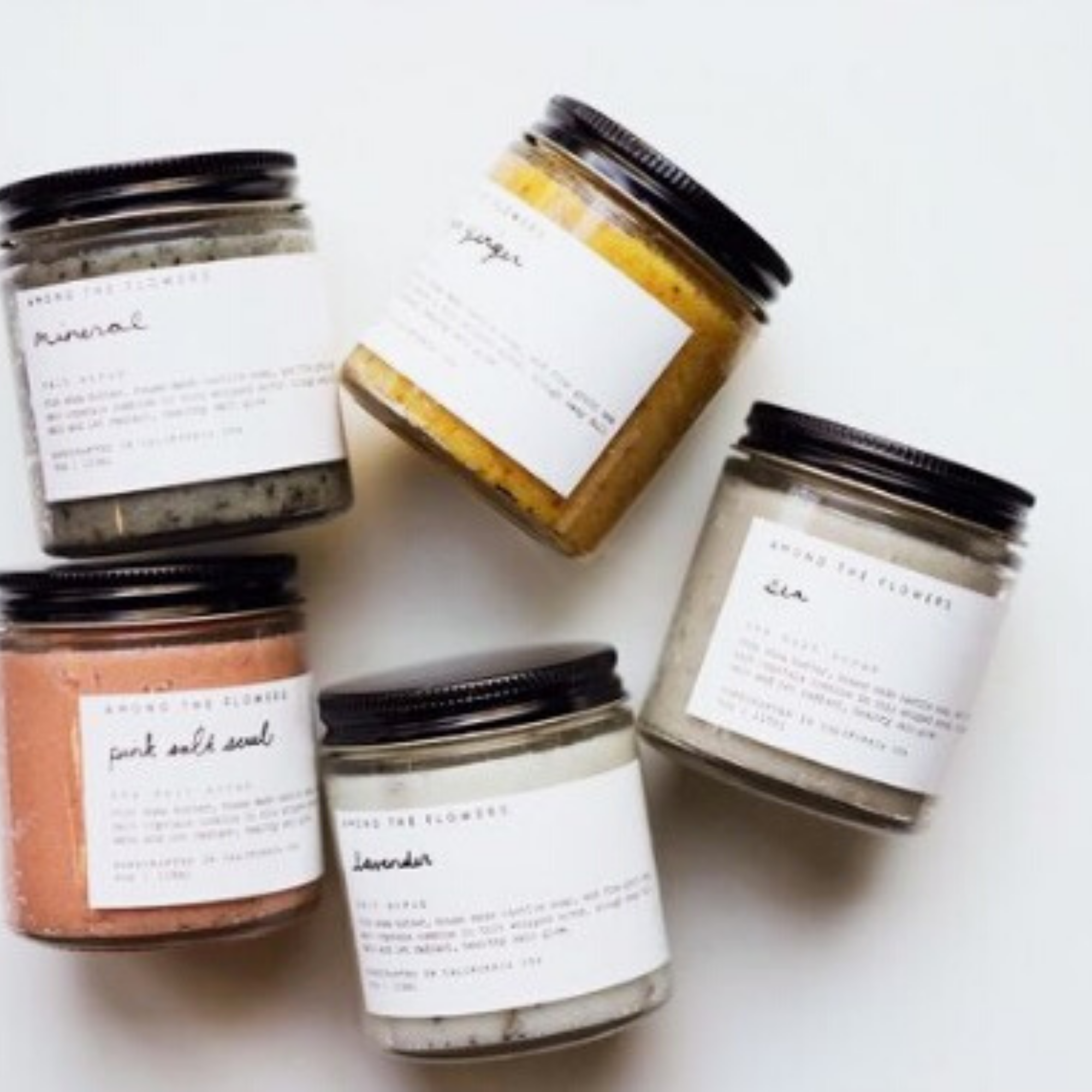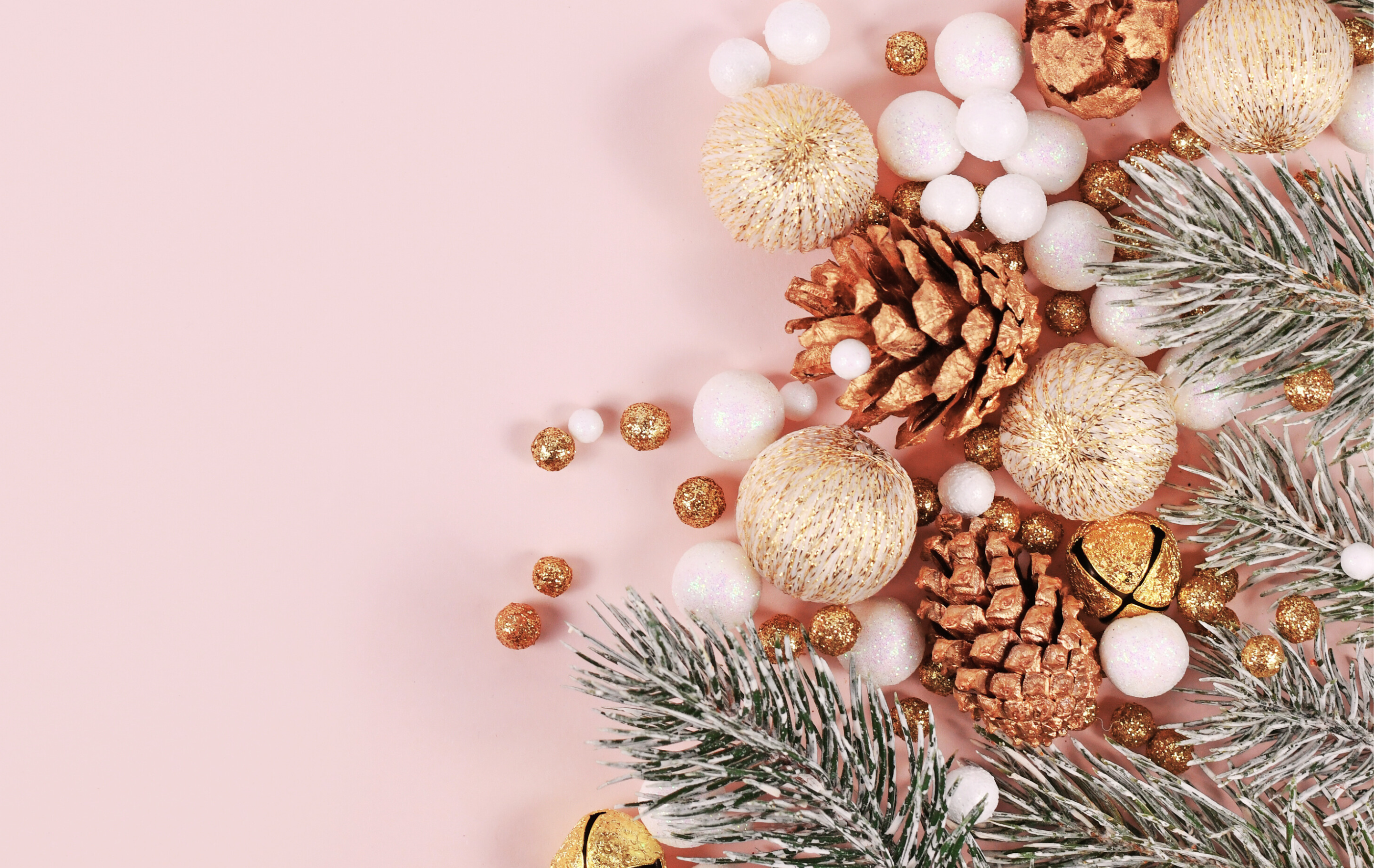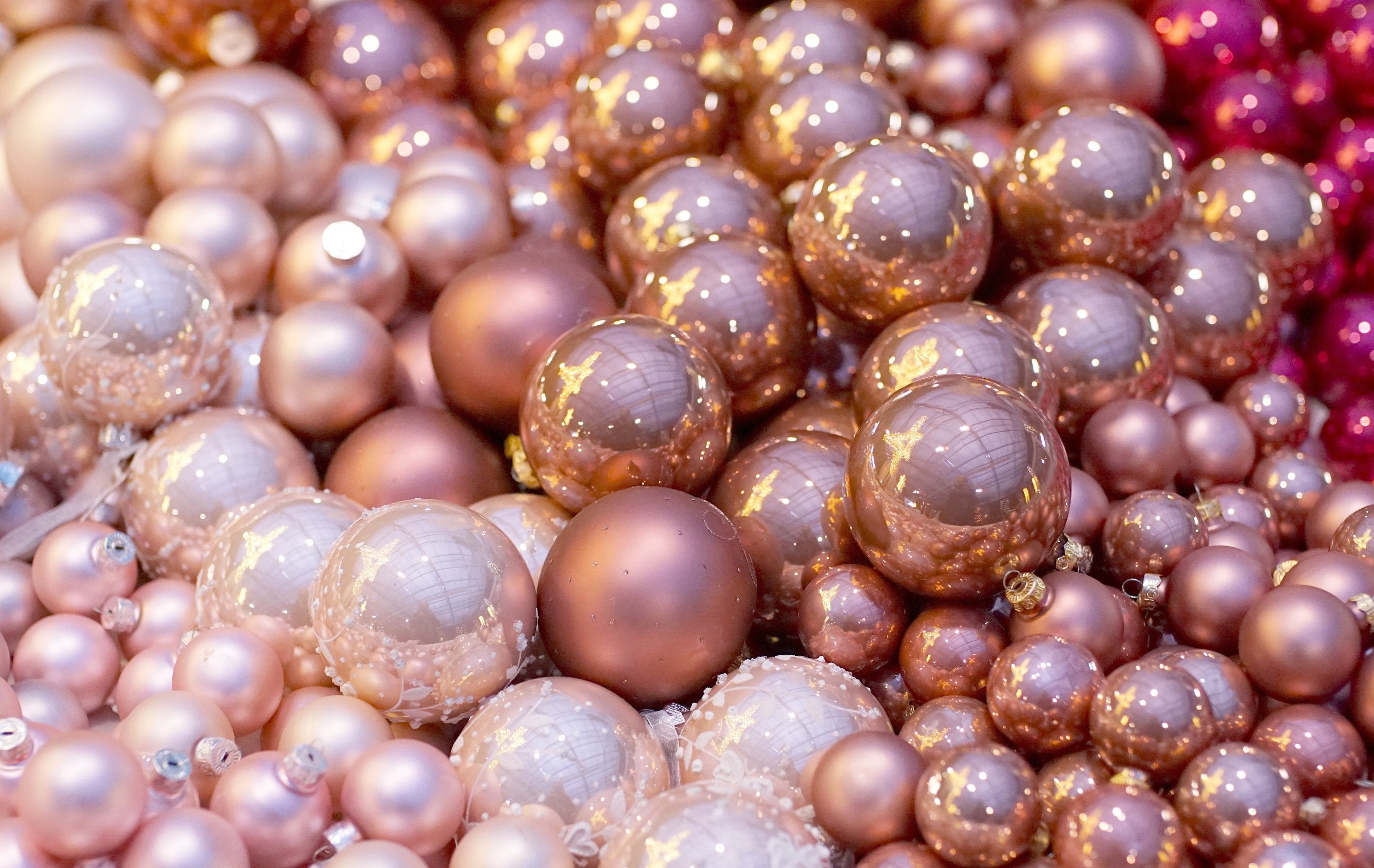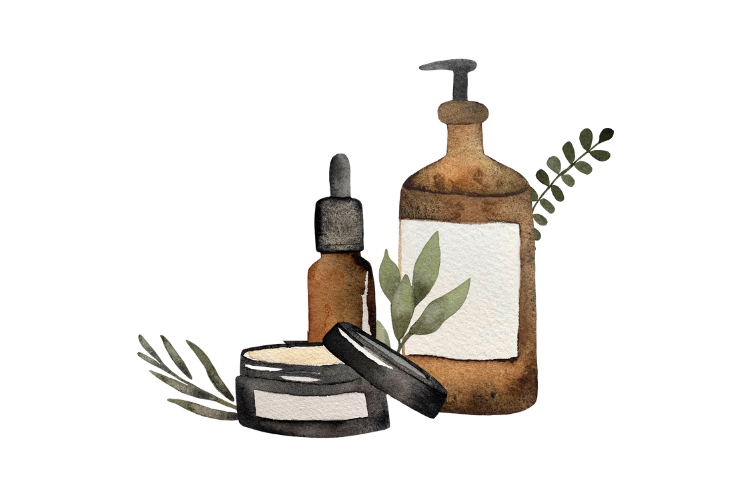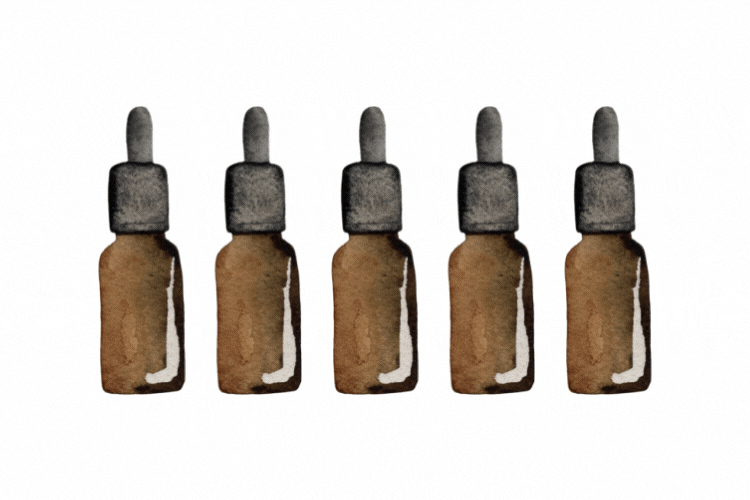Aldehydes
An aromatic chemical first synthesized in the early 20th century that “lifts” a fragrance. Abstract olfactory notes range from soapy to metallic, waxy to starchy, fatty to citrusy.
Amber
Full-bodied accords of natural and synthetic materials like patchouli, frankincense, myrrh, and vanilla. Often used in oriental fragrances to give off a rich, warm, sweet, spicy feel.
Ambergris
One of the most valuable raw materials in perfumery, natural ambergris is derived from sperm whale vomit and gives off a musky marine, sweet earthy aroma. Ours is synthetically and sustainably made (see ambroxan below).
Ambroxan
A synthetic, sustainable substitute for ambergris that emits an intense woody-ambery, sweet-earthy, musky odor with a delicate animal tonality.
Angelica
A member of the celery family, this flowering plant is used in Chartreuse liqueur and emits a bitter, sweet, rooty smell. Synthetic versions act as a synergist to amplify other scents.
Bigarade
Derived from the French term for bitter oranges, bigarade’s odor profile is a cross between sweet orange oil and bitter grapefruit oil.
Bergamot
Extracted from the rind of bergamot orange, its spicy, sunny aroma mingles with tart acidity. Often used in the perfumer’s palette due to its sparkling, multifaceted silhouette.
Benzoin
A rich, balsamic gum resin obtained from the bark of styrax trees. Sweet and smooth with hints of vanilla, caramel and cinnamon, benzoin acts as an effective scent fixative.
Cashmeran
A popular synthetic accord often used as a base note with a soft, warm woody, musky amber scent. It’s reminiscent of cashmere wool, hence the name.
Cassie
First cultivated for perfumery in Rome in the 16th century, the mimosa absolute is extracted from the sweet acacia flower. Warm and honeyed, spiced and powdery, full of depth.
Castoreum
Originally an oily secretion extracted from the abdominal sacs of beavers, castoreum is now created more sustainably in a lab. Imparts a warm, leathery aroma.
Clove
A coveted spice for centuries, clove comes from the French word, clou. It’s often used as a middle note due to its warm and spicy, sweet smelling essence.
Frankincense
A fragrant gum resin, frankincense was burned as incense by the ancient Romans. An aromatic blend of citrus, smoke, oriental spices, rosemary and resins.
Geranium
A flowering plant that’s similar to rose, but with leafy greens, a lemony twist and less of the powderiness.
Hedione
Hedione is the Greek word for pleasure, which is fitting since it stimulates the area of a woman’s brain responsible for the release of sex hormones. A molecular component of jasmine, it’s often described as jasmine light—fresh and floral with a hit of citrus mixed in.
Heliotrope
Used in perfumery since Ancient Egypt, these royal purple flowers enjoy a scent that’s more food-like than floral. Think fluffy, powdery almond mixed with syrupy cherries. It’s now synthetically and sustainably made (see heliotropin below).
Heliotropin
A synthetic molecule that imitates the scent of heliotrope. Emits a powdery, almond scent with floral tonalities.
Incense
Often referred to as frankincense in the perfume world, its fragrant gum resin produces a woody, peppered, smoky, resinous odor when burned.
Iris
Orris is the “butter” from the dried roots of the iris flower. It takes a minimum of five years to cultivate, making it one of the most prized and expensive fragrances. The final aroma is rich, earthy, carroty and powdery.
Jasmine
A sweet, narcotic-like floral from the olive family, easily distinguishable due to its deeply intoxicating, sensual aroma. Often used as a base note.
Labdanum
Originating from the rockrose bush, it covers itself in a sticky, aromatic resin when the temperature rises, giving off a woody, amber, and sometimes leathery odor.
Leather
An accord of synthetic or natural raw materials that invokes a sweet and smoky, woody and earthy, tobacco odor profile, reminiscent of leather.
Lily of the Valley
Because processing destroys its delicate odor, this timeless flowering plant—also known as Muget—is recreated synthetically (hydroxycitronellal), and gives off a watery, green, perfumey aroma with facets of jasmine.
Magnolia
A blooming plant with over 200 species, magnolia gives off a deep citrus aroma of candied lemon that's sweet, fresh, and tart-like, with spicy and musky undertones.
Muguet
The French name for Lily of the Valley, this timeless flowering plant is now recreated synthetically (hydroxycitronellal), giving off a watery, green, perfumey aroma with facets of jasmine.
Musk
Originally derived from the glands of musk deer, today’s musk accords are synthetically and sustainably made. Often used to extend the life of fragrances, it adds a distinctive warm and sensual, soft and sweet, skin-like smell.
Neroli
Derived from the Seville orange, neroli boasts a sharper, more citrus scent than traditional orange blossom. We use the synthetic, nerolidol, for greater sustainability.
Oak Moss
Extracted from a lichen that grows on oak trees in moist, shady forest floors, oakmoss emits a strong, earthy, mossy aroma with bark-like qualities and a leather-like undertone.
Oud
The Arabic word for wood, oud is made from Aquilaria tree resin, and is revered for its animalic, earthy, dark and rich woody profile.
Patchouli
Often considered a “hippie scent”, patchouli originated in India and was traditionally used as insect repellent. A member of the mint family, it has a strong, sweet, pungent scent that blends well with sweet accords.
Rose
One of the most beloved scents throughout history— said to be Cleopatra’s favorite flower—rose is often thought of as a powdery fragrance, although today’s accord can be woody, musky, spicy or earthy.
Sandalwood
One of the oldest known perfumery ingredients, sandalwood is prized for its smooth, milky, creamy, woody profile. Historically derived from sandal trees in India, ours is synthetically—and sustainably—made, since it’s now a vulnerable species.
Salicylate
A sweet, balsamic-like synthetic note that’s often used as a base for heavy florals such as gardenia and jasmine due to its ability to add weight and depth.
Tuberose
Despite its name, this intoxicating flower is not a member of the rose family. Tuberose is so heady that just a few stems can fill a room. Often blended alongside other white flowers, synthetic versions are frequently used to amplify its creaminess.
Vetiver
An essential oil distilled from the roots of a tall grass, vetiver is dry and earthy, peppery and lemony, with woody undertones—like uncut grass on a warm day.
White Musk
Often used to boost a scent’s longevity, white musk is a clean and cottony, sweet and powdery, soft and smooth synthetic scent that lacks the animal elements of natural musk accords.
An aromatic chemical first synthesized in the early 20th century that “lifts” a fragrance. Abstract olfactory notes range from soapy to metallic, waxy to starchy, fatty to citrusy.
Amber
Full-bodied accords of natural and synthetic materials like patchouli, frankincense, myrrh, and vanilla. Often used in oriental fragrances to give off a rich, warm, sweet, spicy feel.
Ambergris
One of the most valuable raw materials in perfumery, natural ambergris is derived from sperm whale vomit and gives off a musky marine, sweet earthy aroma. Ours is synthetically and sustainably made (see ambroxan below).
Ambroxan
A synthetic, sustainable substitute for ambergris that emits an intense woody-ambery, sweet-earthy, musky odor with a delicate animal tonality.
Angelica
A member of the celery family, this flowering plant is used in Chartreuse liqueur and emits a bitter, sweet, rooty smell. Synthetic versions act as a synergist to amplify other scents.
Bigarade
Derived from the French term for bitter oranges, bigarade’s odor profile is a cross between sweet orange oil and bitter grapefruit oil.
Bergamot
Extracted from the rind of bergamot orange, its spicy, sunny aroma mingles with tart acidity. Often used in the perfumer’s palette due to its sparkling, multifaceted silhouette.
Benzoin
A rich, balsamic gum resin obtained from the bark of styrax trees. Sweet and smooth with hints of vanilla, caramel and cinnamon, benzoin acts as an effective scent fixative.
Cashmeran
A popular synthetic accord often used as a base note with a soft, warm woody, musky amber scent. It’s reminiscent of cashmere wool, hence the name.
Cassie
First cultivated for perfumery in Rome in the 16th century, the mimosa absolute is extracted from the sweet acacia flower. Warm and honeyed, spiced and powdery, full of depth.
Castoreum
Originally an oily secretion extracted from the abdominal sacs of beavers, castoreum is now created more sustainably in a lab. Imparts a warm, leathery aroma.
Clove
A coveted spice for centuries, clove comes from the French word, clou. It’s often used as a middle note due to its warm and spicy, sweet smelling essence.
Frankincense
A fragrant gum resin, frankincense was burned as incense by the ancient Romans. An aromatic blend of citrus, smoke, oriental spices, rosemary and resins.
Geranium
A flowering plant that’s similar to rose, but with leafy greens, a lemony twist and less of the powderiness.
Hedione
Hedione is the Greek word for pleasure, which is fitting since it stimulates the area of a woman’s brain responsible for the release of sex hormones. A molecular component of jasmine, it’s often described as jasmine light—fresh and floral with a hit of citrus mixed in.
Heliotrope
Used in perfumery since Ancient Egypt, these royal purple flowers enjoy a scent that’s more food-like than floral. Think fluffy, powdery almond mixed with syrupy cherries. It’s now synthetically and sustainably made (see heliotropin below).
Heliotropin
A synthetic molecule that imitates the scent of heliotrope. Emits a powdery, almond scent with floral tonalities.
Incense
Often referred to as frankincense in the perfume world, its fragrant gum resin produces a woody, peppered, smoky, resinous odor when burned.
Iris
Orris is the “butter” from the dried roots of the iris flower. It takes a minimum of five years to cultivate, making it one of the most prized and expensive fragrances. The final aroma is rich, earthy, carroty and powdery.
Jasmine
A sweet, narcotic-like floral from the olive family, easily distinguishable due to its deeply intoxicating, sensual aroma. Often used as a base note.
Labdanum
Originating from the rockrose bush, it covers itself in a sticky, aromatic resin when the temperature rises, giving off a woody, amber, and sometimes leathery odor.
Leather
An accord of synthetic or natural raw materials that invokes a sweet and smoky, woody and earthy, tobacco odor profile, reminiscent of leather.
Lily of the Valley
Because processing destroys its delicate odor, this timeless flowering plant—also known as Muget—is recreated synthetically (hydroxycitronellal), and gives off a watery, green, perfumey aroma with facets of jasmine.
Magnolia
A blooming plant with over 200 species, magnolia gives off a deep citrus aroma of candied lemon that's sweet, fresh, and tart-like, with spicy and musky undertones.
Muguet
The French name for Lily of the Valley, this timeless flowering plant is now recreated synthetically (hydroxycitronellal), giving off a watery, green, perfumey aroma with facets of jasmine.
Musk
Originally derived from the glands of musk deer, today’s musk accords are synthetically and sustainably made. Often used to extend the life of fragrances, it adds a distinctive warm and sensual, soft and sweet, skin-like smell.
Neroli
Derived from the Seville orange, neroli boasts a sharper, more citrus scent than traditional orange blossom. We use the synthetic, nerolidol, for greater sustainability.
Oak Moss
Extracted from a lichen that grows on oak trees in moist, shady forest floors, oakmoss emits a strong, earthy, mossy aroma with bark-like qualities and a leather-like undertone.
Oud
The Arabic word for wood, oud is made from Aquilaria tree resin, and is revered for its animalic, earthy, dark and rich woody profile.
Patchouli
Often considered a “hippie scent”, patchouli originated in India and was traditionally used as insect repellent. A member of the mint family, it has a strong, sweet, pungent scent that blends well with sweet accords.
Rose
One of the most beloved scents throughout history— said to be Cleopatra’s favorite flower—rose is often thought of as a powdery fragrance, although today’s accord can be woody, musky, spicy or earthy.
Sandalwood
One of the oldest known perfumery ingredients, sandalwood is prized for its smooth, milky, creamy, woody profile. Historically derived from sandal trees in India, ours is synthetically—and sustainably—made, since it’s now a vulnerable species.
Salicylate
A sweet, balsamic-like synthetic note that’s often used as a base for heavy florals such as gardenia and jasmine due to its ability to add weight and depth.
Tuberose
Despite its name, this intoxicating flower is not a member of the rose family. Tuberose is so heady that just a few stems can fill a room. Often blended alongside other white flowers, synthetic versions are frequently used to amplify its creaminess.
Vetiver
An essential oil distilled from the roots of a tall grass, vetiver is dry and earthy, peppery and lemony, with woody undertones—like uncut grass on a warm day.
White Musk
Often used to boost a scent’s longevity, white musk is a clean and cottony, sweet and powdery, soft and smooth synthetic scent that lacks the animal elements of natural musk accords.


